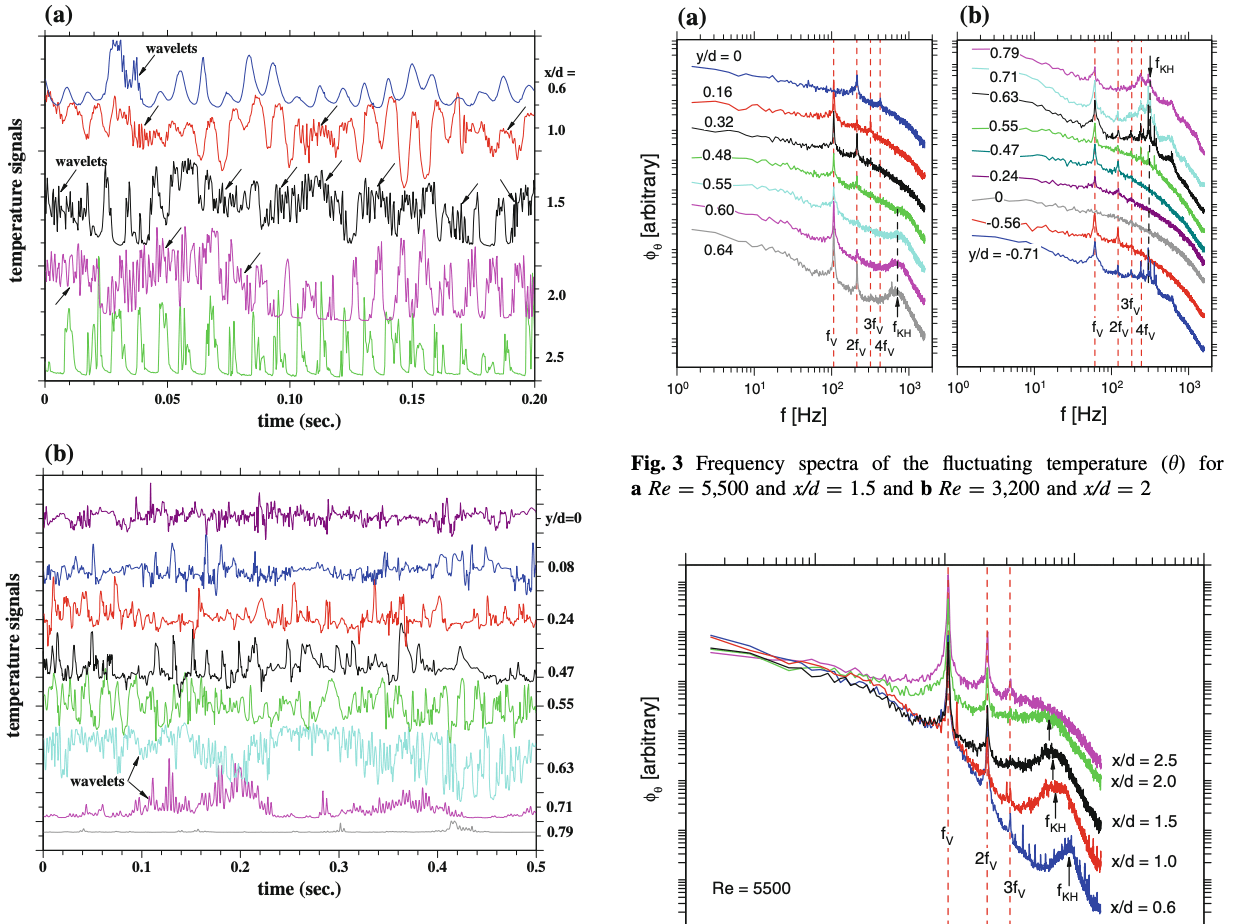Abstract
In this paper, we investigate the thermal characteristics of wake shear layers generated by a slightly heated circular cylinder. Measurements of the fluctuating temperature were made in the region x/d = 0.6 to x/d = 3 (where x is the downstream distance from the cylinder axis and d is the cylinder diameter) using a single cold-wire probe. The Reynolds number Re was varied in the range 2,600–8,600. For Re = 5,500, simultaneous measurements were made with a rake of 16 cold wires, aligned in the direction of the mean shear, at x/d = 2 and 3. The results indicate that the passive temperature can be an effective marker of various instabilities of the wake shear layers, including the Kelvin–Helmholtz (KH) instability. The temperature data have confirmed the approximate Re m dependence of the KH instability frequency (f KH) with different values of m over different ranges of Re, as reported previously in the literature. However, it is found that this power-law dependence is not exact, and a third-order polynomial dependence appears to fit the data well over the full range of Re. Importantly, it is found that the wake shear-layer instabilities can be grouped into three categories: (1) one with frequencies much smaller than the Bénard–Kármán-vortex shedding frequency, (2) one associated with the vortex shedding and (3) one related to the KH instability. The low-frequency shear-layer instabilities from both sides of the cylinder are in-phase, in contrast to the anti-phase high-frequency KH instabilities. Finally, the observed streamwise decrease in the mean KH frequency provides strong support for the occurrence of vortex pairing in wake shear layers from a circular cylinder, thus implying that both the wake shear layer and a mixing layer develop in similar fashion.

